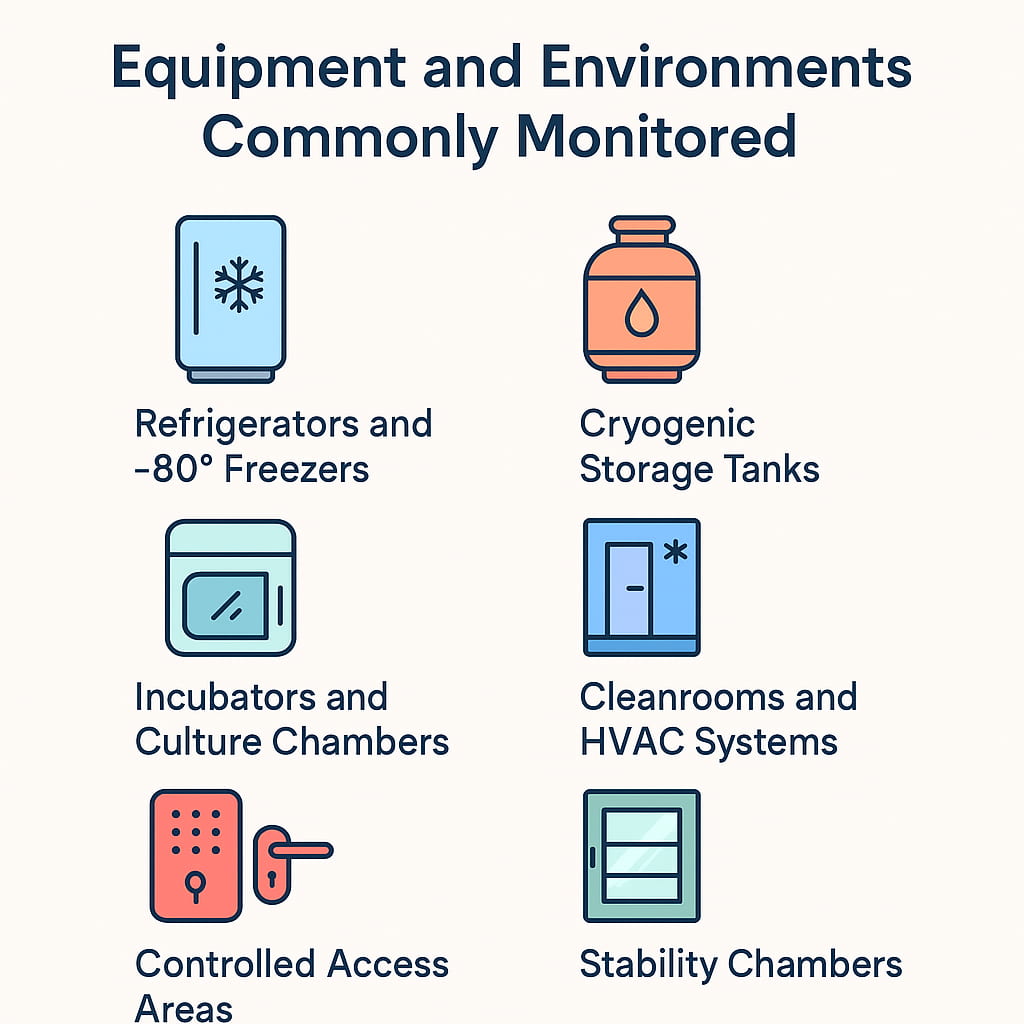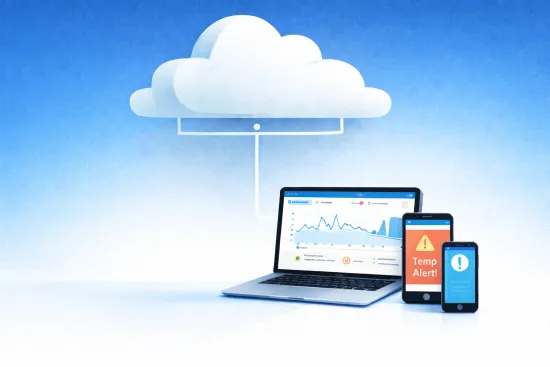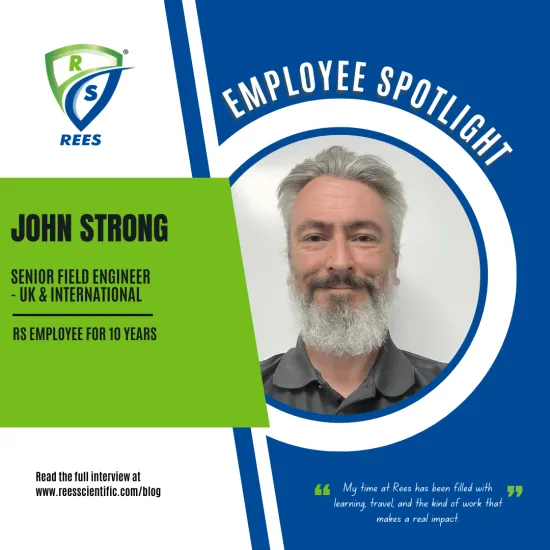EMS
Why Environmental Monitoring is Mission-Critical in Cell and Gene Therapy Labs
Author: Gagan Kaur
Apr 25, 2025

As the cell and gene therapy (CGT) field continues to revolutionize modern medicine, the facilities that support this work face increasing demands for precision, compliance, and reliability. From manufacturing suites to cryogenic storage, even the smallest deviation in environmental conditions can compromise an entire batch, delay commercialization, or risk noncompliance.
Environmental monitoring isn’t just a regulatory expectation—it’s a strategic necessity. It touches every role within a CGT organization, from lab personnel to executive leadership. Understanding why it matters at every level is essential to building resilient operations that support innovation.
For QA & Compliance Professionals: Ensuring Data Integrity and Inspection Readiness
Compliance teams are tasked with maintaining rigorous standards while preparing for audits from agencies like the FDA, EMA, and MHRA. Environmental conditions must be tracked continuously and documented thoroughly. Manual logs and disconnected systems increase the risk of missing data, unacknowledged alarms, and gaps in traceability.
An effective environmental monitoring strategy ensures:
- Continuous, automated documentation of conditions and deviations
- Easy access to historical data and real-time trends
- Confidence in maintaining compliance with 21 CFR Part 11, EU Annex 11, and cGMP guidelines
When inspections occur, the ability to produce validated, time-stamped records across multiple systems is no longer a luxury—it’s expected.
For Facilities Managers: Operational Continuity and Fast Incident Response
Facilities teams are responsible for ensuring HVAC systems, cleanrooms, freezers, and incubators operate within specified conditions 24/7. In cell and gene therapy labs, where materials are often patient-specific or irreplaceable, a failure to detect a temperature excursion could result in catastrophic loss.
For facilities teams, effective monitoring enables:
- Real-time visibility across all critical assets and zones
- Faster response to alarms and fewer equipment-related disruptions
- A proactive approach to preventing excursions before they escalate
Having the right tools in place to catch issues early allows facility teams to shift from reactive troubleshooting to preventive maintenance and strategic oversight.
For Lab Managers and Scientists: Safeguarding the Science
CGT products rely on living cells and temperature-sensitive materials that can lose viability with even brief exposure to adverse conditions. Lab personnel need accurate, real-time environmental data to maintain exper imental consistency and ensure product safety.
imental consistency and ensure product safety.
Monitoring supports lab teams by:
- Protecting samples in refrigerators, -80°C freezers, and cryogenic tanks
- Maintaining optimal incubator conditions for culture work
- Providing actionable data to refine SOPs and reduce variability
When your work represents years of research and lives on the line, there’s no margin for error.
For IT and Validation Teams: Meeting Security and Qualification Standards
Environmental monitoring systems are increasingly networked and integrated with broader enterprise infrastructure. That makes IT and validation teams essential to ensuring systems meet cybersecurity and qualification standards.
Their priorities include:
- Secure access, user authentication, and audit logging
- Qualification support (IQ, OQ, PQ) for system deployment
- Network compatibility and robust backup/recovery capabilities
The goal is a monitoring platform that’s not just compliant—but future-ready, scalable, and aligned with internal IT policies.
For Executive Leadership: Protecting Reputation and Investment
Leaders in CGT organizations are under pressure to accelerate development timelines while maintaining regulatory compliance and protecting IP. Batch failures due to temperature excursions or noncompliance aren’t just operational issues—they can set back commercialization, trigger investigations, or damage investor confidence.
For executives, environmental monitoring is a lever to:
- Reduce risk across the product lifecycle
- Improve facility readiness for scale-up or technology transfer
- Demonstrate maturity and control to partners, regulators, and stakeholders
A strong monitoring strategy signals that the organization is equipped not just to innovate—but to deliver at scale.
Monitoring Is the Backbone of Resilient CGT Operations
Environmental control in CGT labs is more than a technical detail—it’s foundational to delivering safe, effective therapies. It supports compliance, enables data-driven decision-making, and protects the physical integrity of therapies throughout R&D, production, and distribution.
For organizations looking to mature their monitoring strategies, it’s important to seek partners who understand the regulatory landscape, the technical complexities of CGT environments, and the importance of responsive service.
Partnering for Reliability and Compliance
Rees Scientific has supported regulated industries for over 40 years, offering deep experience in temperature-sensitive environments, cleanroom monitoring, and compliance-driven system design. With regional service teams across the country, Rees combines nationwide reach with local responsiveness, ensuring prompt support, faster service calls, and hands-on implementation.
Whether you're launching a new therapy, expanding manufacturing, or strengthening your compliance posture, Rees Scientific offers the expertise, technology, and service infrastructure to support your growth, every step of the way.
FAQs: Environmental Monitoring in Cell & Gene Therapy Labs
Q: What environmental monitoring challenges exist for CGT labs compared to other facilities?
A: Cell and gene therapies involve living materials, ultra-sensitive storage, and highly personalized treatments. A slight deviation in environmental conditions can disrupt homeostasis and ruin operations. This makes real-time monitoring and rapid alerts critical at every step of the R&D and manufacturing process.
Q: Why is continuous temperature and humidity monitoring so important in CGT environments?
A: Many CGT workflows involve materials that are extremely temperature-sensitive, including cells that must be stored at ultra-low or cryogenic temperatures. Any fluctuation in temperature or humidity — even for a short period — can compromise the viability of the product and lead to failed batches or regulatory non-compliance.
Q: How does environmental monitoring support regulatory compliance in CGT labs?
A: Agencies like the FDA, EMA, and others have strict requirements around Good Manufacturing Practices (GMP) and Good Laboratory Practices (GLP). Environmental monitoring systems help document and maintain compliance by providing audit-ready data logs, deviation reports, and 21 CFR Part 11-compliant records.
Q: What systems or equipment should be monitored in CGT workflows?
A: Key systems include cryogenic storage tanks, -80°C freezers, refrigerators, cleanrooms, incubators, stability chambers, and transport containers. Monitoring access control and HVAC systems is also critical to maintaining aseptic conditions and product integrity.
Q: Can environmental monitoring help reduce product loss and improve efficiency?
A: Yes. With real-time alerts and automated reporting, environmental monitoring allows teams to respond immediately to deviations, preventing product loss and ensuring batch continuity. It also reduces the time spent on manual documentation, enabling faster decision-making and smoother audits.
Q: What should CGT labs look for in a monitoring solution?
A: Labs should look for a system that offers real-time monitoring, customizable alerts, secure cloud or hybrid data storage, compliance-ready reporting, and multi-point sensor support (temperature, humidity, CO₂, etc.). Integration with facility infrastructure and service support is also critical.
Let’s Talk About Your Monitoring Strategy
If you're evaluating how to strengthen environmental controls in your facility, or simply want to assess gaps in your current setup, our team is here to help.
Connect with a monitoring expert at Rees Scientific to schedule a discovery call or request a site assessment.



